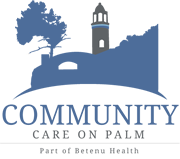
Building A Support Network: Connecting With Other Families In Care Facilities
8 Nov, 2024
Senior Living
The decision to transition a loved one to a care facility can be overwhelming, and family members often find themselves feeling uncertain, isolated, and emotionally drained. However, building a support network with other families in the same care facility can provide invaluable emotional support, practical advice, and a sense of community that makes navigating this journey a little easier. Here, we explore why connecting with other families in care facilities is so valuable and offer practical tips on how to create these meaningful bonds.
1. Why a Support Network is Essential for Family Members
A support network helps families manage the unique emotional and practical challenges of having a loved one in a care facility. The shared experiences within a community of families often create a bond that offers both comfort and encouragement.
Emotional Support
The caregiving journey is filled with complex emotions, from guilt to grief. Speaking with others who understand these feelings can relieve emotional burdens, helping you process these emotions more effectively. Fellow family members who have walked similar paths can provide empathy and insights that close friends or family who aren’t directly involved might struggle to understand.
Practical Advice and Resources
Other families can be a great source of practical advice. Whether it’s tips on navigating facility policies, advice on speaking with caregivers, or recommendations for community resources, families in care facilities are often a wellspring of useful information. From handling medical paperwork to understanding treatment plans, the advice of other families can be invaluable.
Social Connection and Friendship
Building connections with other families can help combat isolation. Developing friendships with people who share your experiences fosters a sense of belonging, allowing you to feel more comfortable in the care facility setting and enjoy a greater sense of normalcy.
2. Starting the Conversation: How to Connect with Other Families
Taking the first step to connect with other families may feel daunting, but a few small gestures can create opportunities for conversation and connection.
Attend Family Meetings and Events
Most care facilities organize family meetings, holiday events, or support group sessions, which are perfect opportunities to meet other families. These events offer a natural environment to introduce yourself, start conversations, and find common ground.
Join Facility-Based Support Groups
Many care facilities host support groups specifically for families. These groups provide a safe, structured environment for sharing concerns, asking questions, and exchanging information. They are often led by a social worker or therapist who can facilitate introductions and help conversations flow.
Reach Out to Families During Visits
Sometimes, just a smile or a friendly greeting in the common areas of the facility can lead to a meaningful conversation. Take advantage of moments in waiting areas or lounges to introduce yourself to other family members. Sharing a brief introduction about your loved one or your experience in the facility can open the door to further conversation.
Utilize Online Groups if In-Person Contact is Limited
If in-person visits or events aren’t possible, many facilities have online groups or forums where families can communicate. If your facility has a Facebook group or other online community, join it and reach out to connect with others virtually.
3. Engaging in Supportive and Constructive Conversations
Building a support network means creating relationships based on empathy, understanding, and respect. Here are some tips for fostering positive interactions with other families.
Listen and Share Empathetically
In any support network, listening is as important as sharing. Show empathy by listening attentively to other family members’ experiences without judgment. Avoid offering unsolicited advice; instead, share your perspective respectfully and allow others to express their thoughts.
Discuss Common Challenges and Solutions
Sharing challenges and brainstorming solutions together can strengthen bonds. Topics like adjusting to facility routines, understanding medical procedures, and managing care decisions are common concerns that can lead to productive conversations. As you exchange stories, you may find helpful tips or strategies for dealing with similar issues.
Respect Privacy and Boundaries
It’s essential to remember that every family has its own approach to caregiving and comfort levels regarding personal information. Avoid pressing others for details they may not wish to share, and be mindful of maintaining confidentiality when discussing sensitive topics.
4. Building a Lasting Support Network
Creating meaningful connections with other families takes time and consistency. Here are a few strategies to help you build a lasting support network:
Establish Regular Meet-Ups
If there are other families you connect with regularly, suggest a set time each week or month to meet. These meet-ups can happen in common areas, nearby coffee shops, or even virtually. By having a scheduled time to connect, you’ll build stronger relationships and provide each other with consistent support.
Consider Forming a Care Partner Team
Some families choose to form small “care partner” teams. A care partner team is a group of families who look out for each other’s loved ones, especially if one family member cannot visit as often. This system provides added security and ensures that everyone’s loved ones are checked on regularly, fostering a sense of community and mutual support.
Share Useful Resources and Contact Information
As relationships develop, it’s helpful to share contact information and resources. Exchange phone numbers or emails, and share helpful resources such as caregiver organizations, legal assistance for elder care, and tips for finding local home health providers. When you come across helpful articles or information, pass them along to your support network to foster a spirit of collaboration.
5. Using Technology to Stay Connected
For families who live far away or face schedule conflicts, staying in touch with other families digitally can be invaluable. Here’s how technology can enhance your support network:
Group Messaging Apps
Create a group chat on messaging apps like WhatsApp or GroupMe. Group messages allow families to stay connected, share updates, and provide support in real time. This can be especially useful when you need to communicate something urgently or share facility news.
Virtual Support Groups
Video platforms such as Zoom or Google Meet allow for virtual meetings with your support network. Virtual gatherings make it easy to stay connected and offer support, even if you’re unable to meet in person.
Social Media Groups
Many care facilities have private Facebook groups or forums for family members to discuss topics, ask questions, and stay updated. Being active in these groups helps you stay connected, find local resources, and discuss shared experiences.
6. The Benefits of Connecting with Staff and Facility Personnel
Building a support network isn’t limited to other families; forming a strong relationship with facility staff and caregivers is equally important. Here’s why connecting with staff can enhance your experience:
Strengthening Communication and Trust
Communicating openly with staff helps build mutual trust, making it easier to address concerns and advocate for your loved one’s care. By working together, families and staff can create a more personalized and supportive care environment.
Accessing Additional Resources and Knowledge
Facility staff often have valuable knowledge about caregiving resources, government assistance programs, and support services. By building a good rapport with them, you’ll have access to additional resources and insights.
Enhancing Your Loved One’s Experience
When staff see family members actively engaged in the community, they are often more likely to involve them in their loved one’s care plan and daily activities. This connection fosters a collaborative approach that can enrich your loved one’s experience in the facility.
Conclusion
Building a support network within a care facility can make a significant difference in the caregiving journey. Through shared understanding, practical advice, and emotional support, families can alleviate stress, enhance their own well-being, and provide better care for their loved ones. By connecting with other families, engaging with staff, and utilizing both in-person and digital communication methods, caregivers can foster a supportive and compassionate community that makes navigating the challenges of care easier and more meaningful.

Leave a Comment